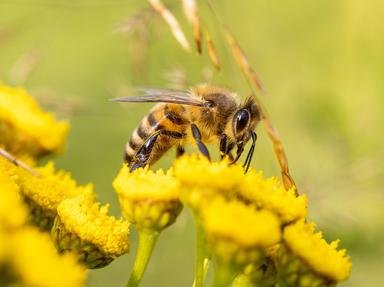Quiz Answer Key and Fun Facts
1. One of the most common species of bee in Europe is the buff-tailed bee, also known as the large earth bumblebee. What is the scientific name for this common bee species?
2. If you are stung by a bee, you can be sure that which of these is true?
3. Apis laboriosa is the largest species of honey bee. It is found in which mountain range?
4. Which bee is widely accepted as being the species most likely to cause damage to your home?
5. Bees are related to wasps. Which of these is a member of the wasp family rather than a bee?
6. Propolis is a resin that bees create from the buds of some trees. For what medicinal purpose in humans can propolis be used?
7. There are some oddly named bees in the world. Three of these are real, but can you pick out the one which is fictitious?
8. What is the purpose of the dance performed by bees?
9. Found in North America, which of these describes the bee Perdita minima?
10. What's a bee without honey? Which famous ancient leader's body was reputedly preserved in honey for more than two years before it was brought home to rest?
Source: Author
rossian
This quiz was reviewed by FunTrivia editor
agony before going online.
Any errors found in FunTrivia content are routinely corrected through our feedback system.
